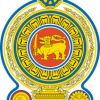පශු සම්පත් හා ග්රාමීය මහජන සංවර්ධන අමාත්යංශය
1.The achievement of sustainable and equitable economic and social benefits to livestock farmers.
2.Increasing the supply of domestic livestock produce at competitive prices to the consumers.
3.Achieve 50% self - reliance in milk by 2015(self reliance means through domestic sources)
4.Substantial increase of current domestic production of poultry product by 2015.
5.Enhance the socio economic status of unprivileged rural communities
6.Increase the income level of the rural community by providing infrastructure facilities and encouraging self-employment and livelihood development.
7.Strengthening of community based organizations for rural community empowerment.
THE LIVESTOCK SECTOR IN SRI LANKA
Sri Lanka has a total land area of 65,610 sq. km. Of this, around 2 million hectares or 30 percent is agricultural land. Almost 75% of the agricultural land is under smallholdings and the balance under estates. The number of smallholdings is estimated at about 1.8 million and of this 90% are less than 2 ha in extent. About 70% smallholdings solely devoted to crop production, the remaining has a mixture of crops and livestock and in few cases solely livestock .
Based on the rainfall pattern and altitude, the country is divided into three main agro-ecological zones namely, low country, mid country and the hill country, and the low and mid country regions again being divided into a wet zone, an intermediate zone and a dry zone.
The agricultural sector contributes around 16.8 percent of National Gross Domestic Production (GDP). The livestock sub sector contributes around 1.2% of national GDP.
There are about 1.5 million cattle, 0.3 million buffalo’s, 13 million poultry 0.08 million pigs in the country with negligible number of sheep, ducks other species.
Livestock are spread throughout all regions of Sri Lanka with concentrations of certain farming systems in particular areas due to cultural, market and agro climatic reasons.
Dairy Sector
Dairy sector is the most important of all livestock sub sectors. This is primarily because of the influence it can make on the rural economy. Sri Lanka imports around 65,000 MT of dairy commodities, mainly FCMP, and dairy development is therefore seen as an instrument to replace this large volume of imported commodities and also to generate rural employment. Unlike with pigs and poultry where certain religious and socio-cultural sentiments are seen in promoting the development of such species, dairying is acceptable to all ethnic groups and religious sectors.
The domestic milk production only constitutes about 17 percent of the requirement and the rest is imported. The import bill on dairy commodities is around 15 billion rupees or approximately 13 Million USD. The government attention is most focused on the dairy sub sector; to develop this sector into a ‘local industry’. The government policy on dairy development is aimed at producing 50% of country’s requirement of milk by the year 2015. Priority



